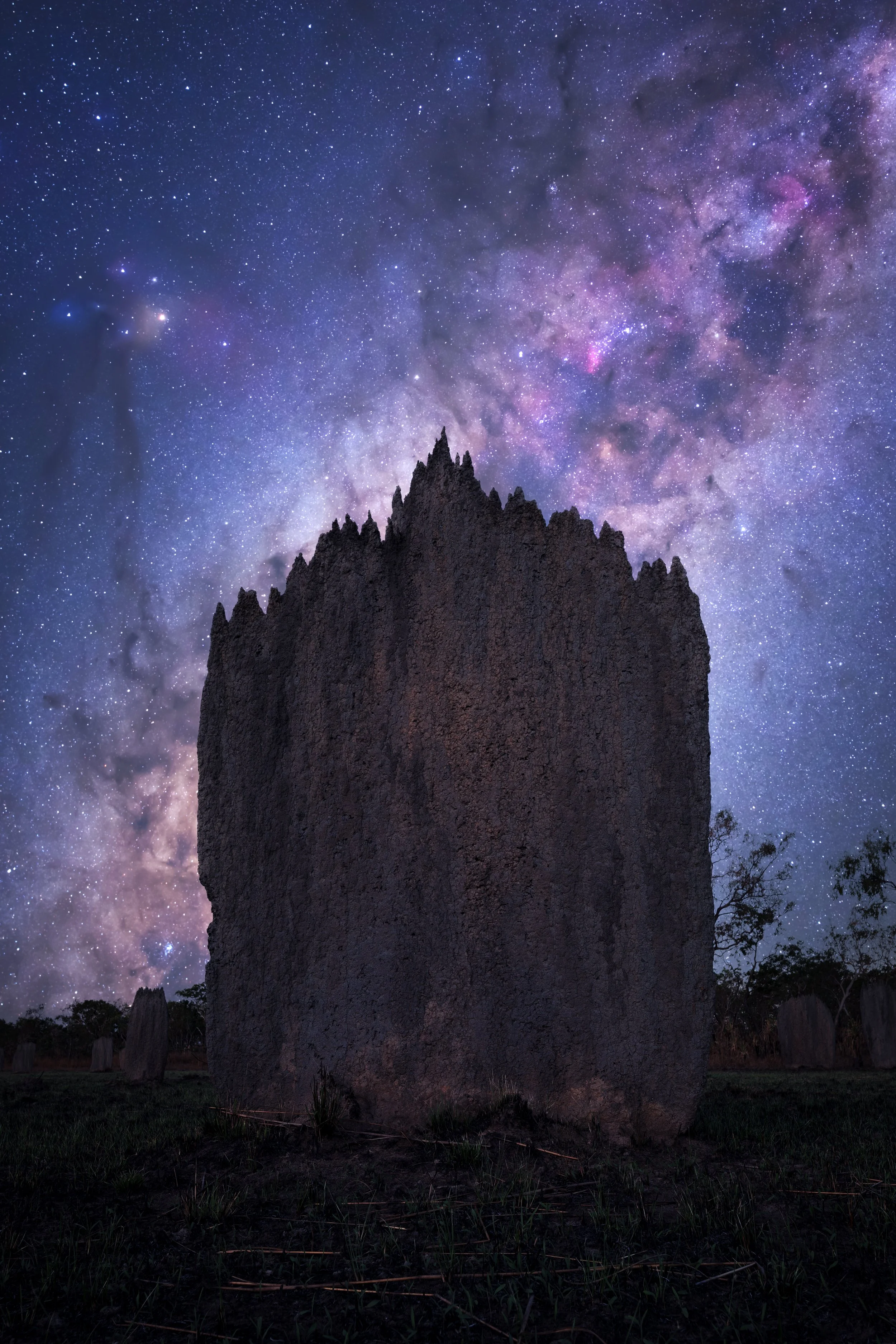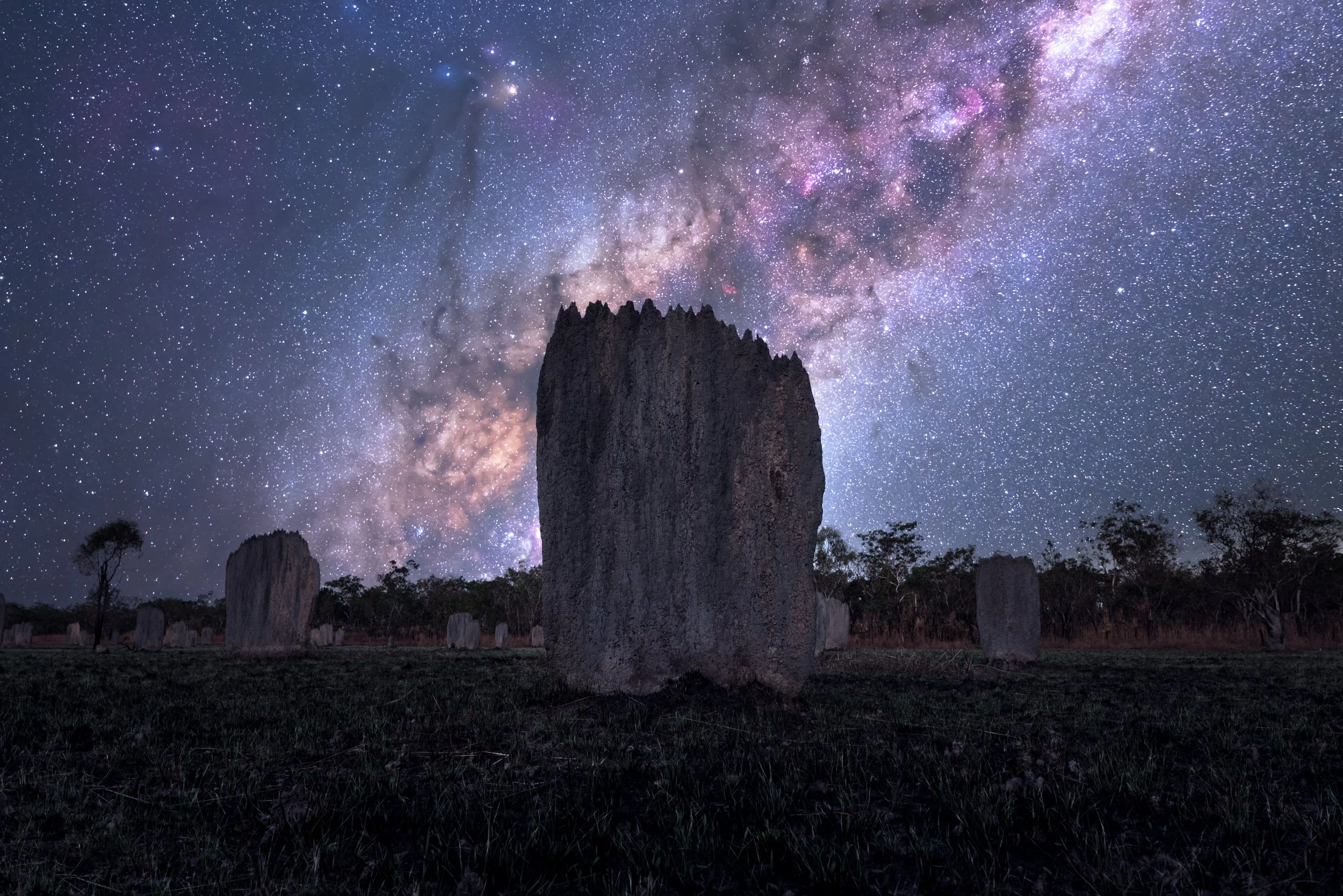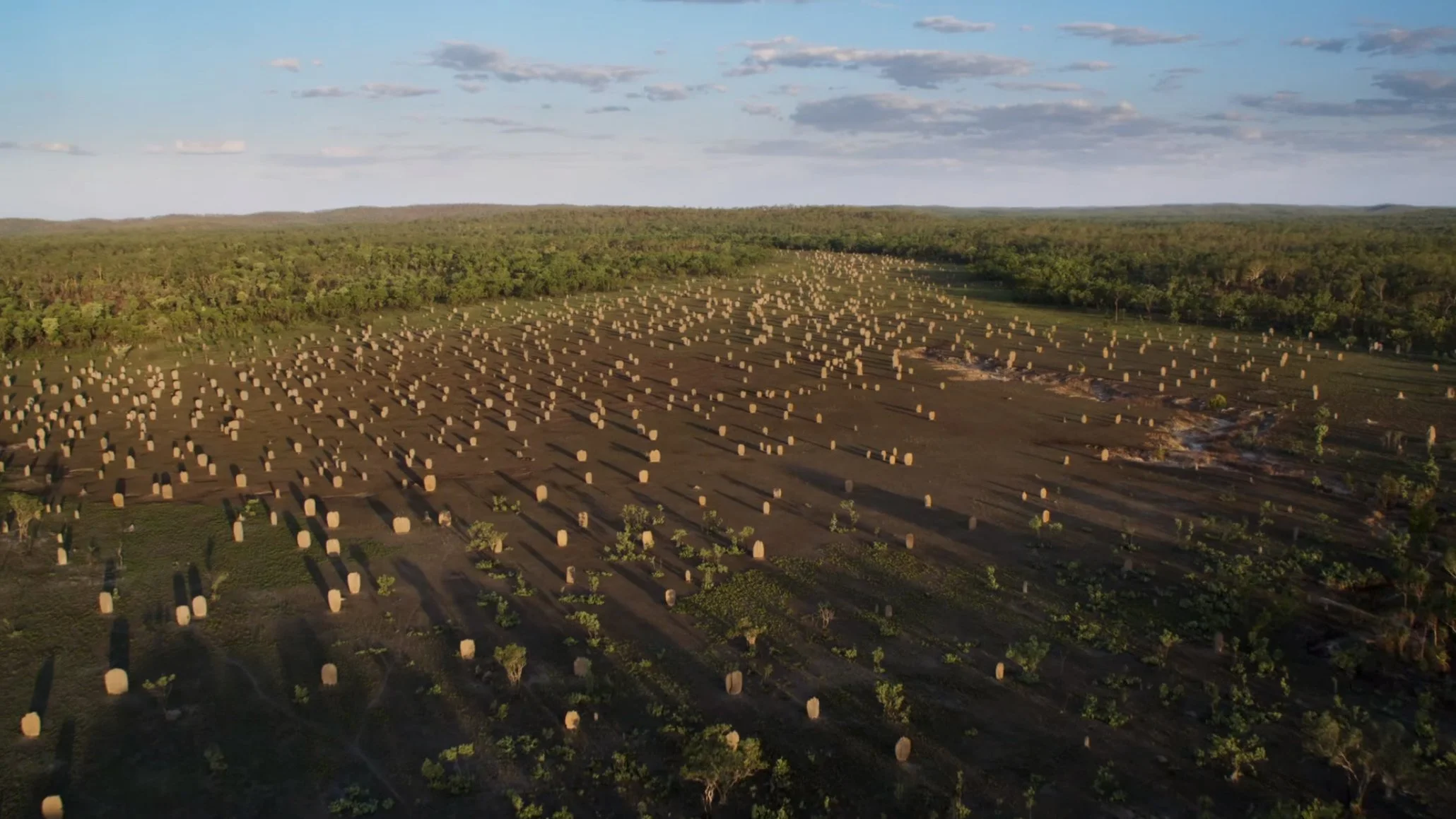City of the little
What you see in these images are magnetic termite mounds. They look like grand cathedrals, but the whole structure is squashed into thin plates. They have such peculiar shapes because the curious creatures who built these edifices have learned to regulate their building's temperature using architecture. During morning and dawn, the large area facing east and west receives a lot of sunlight, keeping the mounds warm. During noon, the slim shape minimises exposure to the scorching sun overhead, keeping them cool.
The termites always put their ‘solar panels’ facing East-West. They are positioned so accurately that humans use them to tell directions; that's why the termites are sometimes called 'compass termites'.
Here is a screenshot from ‘Planet Earth II - Grasslands’. In the twilight, shadows cast by the setting sun make a beautiful array of dark columns
Timelapse of the Milky Way Rise in front of a termite mound.
If you ever walk into their territory, you'll be surprised by the scale on which they change the landscape. They and other termites build thousands of skyscrapers covering a vast land area. The termites are like little farmers, working with the trees and shrubs to sustain the local communities. Just like our buildings are home to pigeons and parrots, the termite mounds provide shelter for other animals. Birds and rats regularly nest in them. When bushfires break out during the dry season, lizards and quolls become refugees, and the mounds become their safehouses. It's fascinating these termite hills can withstand fire while keeping the residents safe. Most of our buildings crumble and collapse in the presence of fire, and we will be toasted.
Visiting their habitats is like travelling to a different world, where they are indigenous, and we are the aliens.




